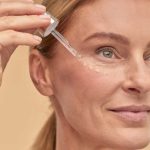Acne is a common skin condition that affects millions of people worldwide, often causing physical and emotional distress. While acne can be challenging to manage, the good news is that there are numerous non-invasive treatment options available that can help improve acne-prone skin and reduce the appearance of acne scars, treatments that can include chemical peels and microneedling.
Discover some of the most effective non-invasive treatments for acne and acne scarring that will help you achieve clearer, smoother, and more radiant skin.
Understanding Acne and Acne Scarring
Acne occurs when hair follicles become clogged with oil and dead skin cells, leading to the formation of pimples, blackheads, whiteheads, and cysts. In some cases, acne can leave behind permanent scarring, affecting the texture and appearance of the skin.
Non-Invasive Treatment Options for Acne
1. Topical Treatments:
Over-the-counter and prescription topical treatments containing ingredients like benzoyl peroxide, salicylic acid, and retinoids can help control acne by reducing inflammation, unclogging pores, and promoting skin cell turnover.
2. Oral Antibiotics:
For more severe cases of acne, dermatologists may prescribe oral antibiotics to target acne-causing bacteria and reduce inflammation.
3. Birth Control Pills:
Certain oral contraceptives that contain estrogen and progestin can be effective in managing acne in women by regulating hormone levels.
4. Light Therapy:
Light-based therapies such as blue light and red light treatments can effectively reduce acne-causing bacteria and inflammation, helping to clear the skin.
5. Chemical Peels:
Chemical peels involve applying a solution to the skin to exfoliate the top layer, promoting skin cell turnover and reducing acne. Different types of peels are available, and the strength can be adjusted based on individual needs.
6. Extractions:
In-office extractions by a dermatologist can safely remove whiteheads and blackheads, preventing them from turning into inflamed lesions.
Non-Invasive Treatment Options for Acne Scarring
1. Microdermabrasion:
This non-invasive procedure uses a handheld device to exfoliate the outer layer of the skin, reducing the appearance of mild acne scars.
2. Chemical Peels:
In addition to helping with active acne, chemical peels can also improve the texture and appearance of acne scars by promoting collagen production and skin renewal.
3. Microneedling:
Microneedling involves creating tiny punctures in the skin with fine needles to stimulate collagen production, reducing the appearance of acne scars over time.
4. Dermal Fillers:
Dermal fillers containing hyaluronic acid can plump up depressed acne scars, making them less noticeable and restoring volume to the skin.
5. Laser Resurfacing:
Fractional laser treatments can target and remodel scar tissue, improving the overall texture and appearance of acne scars.
6. Radiofrequency Microneedling:
This advanced treatment combines microneedling with radiofrequency energy to stimulate collagen production and reduce the appearance of acne scars.
7. Platelet-Rich Plasma (PRP) Therapy:
PRP therapy involves using the patient’s own blood to extract platelets and growth factors, which are then injected into the skin to promote healing and collagen production, leading to improved acne scars.
Combination Therapies for Optimal Results
For more significant improvement in both acne and acne scarring, combination therapies may be recommended. Dermatologists often create personalized treatment plans that may include a combination of topical treatments, oral medications, light therapies, and in-office procedures tailored to the individual’s unique needs and skin condition.
Preventing Acne and Acne Scarring
While non-invasive treatments can be highly effective in managing acne and acne scarring, prevention is always better than cure. Here are some tips to help prevent acne and minimize the risk of scarring:
- Follow a consistent skincare routine with gentle cleansers suitable for your skin type.
- Avoid picking or squeezing pimples, as this can worsen inflammation and increase the risk of scarring.
- Protect your skin from the sun by using a broad-spectrum sunscreen with SPF 30 or higher.
- Use non-comedogenic and oil-free skincare and makeup products to prevent clogged pores.
- Keep your hair clean and away from your face, as hair products and oils can contribute to acne breakouts.
Conclusion
Acne and acne scarring can significantly impact one’s self-esteem and quality of life. However, with the wide range of non-invasive treatment options available, individuals can take proactive steps to improve their skin’s appearance and achieve a clearer and smoother complexion.
From topical treatments and light therapies for acne management to microdermabrasion, microneedling, and laser resurfacing for acne scarring, there are effective solutions to address each concern. If you’re struggling with acne or acne scarring, consulting with a qualified dermatologist can help you create a personalized treatment plan to restore your skin’s health and confidence.
Remember that consistency and patience are key to achieving the best results, and with the right approach, you can embrace radiant and rejuvenated skin for years to come.



